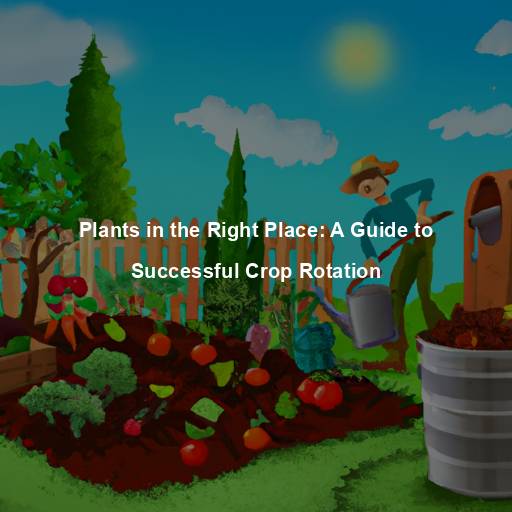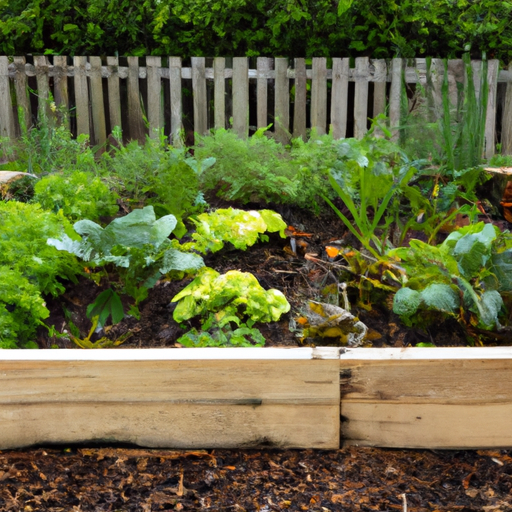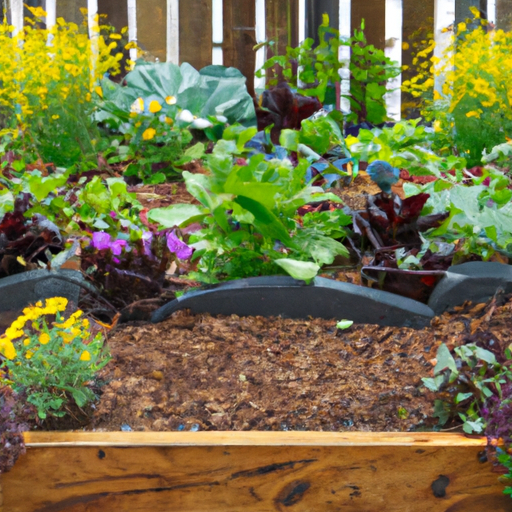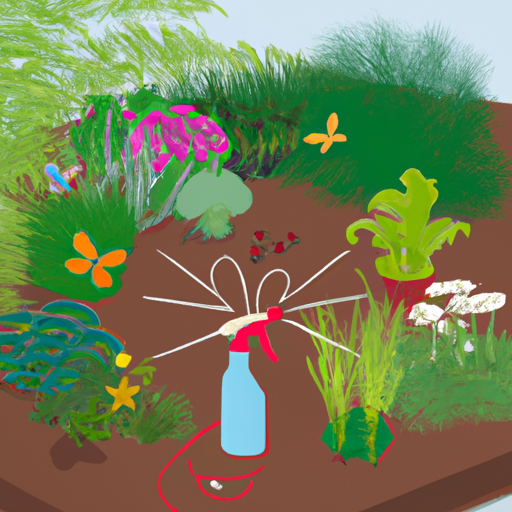Welcome fellow gardening enthusiasts! As Master Gardeners, we know the importance of proper crop rotation in achieving successful and bountiful harvests.
Plants thrive when they are in the right place, and rotating crops is a key factor in maintaining soil health, preventing pest and disease buildup, and maximizing yields.
In this article, we will delve into the art of crop rotation – what it means, why it’s necessary, and how to implement it effectively.
Whether you’re a seasoned gardener or just starting out with your first plot, understanding these principles will set you on the path to success.
So grab your shovel and let’s get started!
The Importance Of Crop Rotation
Picture this: you’ve been working hard to cultivate a beautiful garden full of thriving plants. But suddenly, your crops are being attacked by pests and diseases, and no matter what you do, they just won’t grow as well as they used to.
The solution might be simpler than you think – crop rotation.
As Master Gardeners, we understand the importance of sustainable agriculture practices such as crop diversity and rotational planting techniques.
By rotating your crops each season, you can prevent the buildup of pests and disease in the soil while improving overall soil health.
So let’s dive into why crop rotation is crucial for successful gardening!
Understanding Soil Health
Now that we understand the importance of crop rotation, let’s delve deeper into understanding soil health.
At the heart of a successful garden lies healthy soil, and this can be achieved through proper nutrient cycling and an understanding of soil composition.
Soil is a complex mixture of minerals, organic matter, water, air and living organisms; understanding how these components interact with one another is key to maintaining good soil health.
Nutrient cycling is also essential as it allows plants to access vital nutrients they need for growth while reducing excess build-up in the soil which can lead to pollution.
By practicing proper crop rotation techniques, you can help maintain healthy soils by preventing pest infestations, improving plant vigor and ensuring optimal fertility levels are maintained throughout the growing season.
Remember that building healthy soils takes time and patience but it pays off big time when you see your plants thriving!
Preventing Pest And Disease Buildup
To maintain a healthy garden, it’s important to prevent pest and disease buildup. The first step in doing so is to practice good sanitation by removing any dead or diseased plant material from the garden.
Additionally, natural pest solutions can be used instead of harmful pesticides that can harm beneficial insects as well as pests. Companion planting strategies are another effective way to deter pests and diseases. Certain plants have natural properties that repel specific pests or attract beneficial insects that prey on them. Some examples include marigolds for deterring nematodes, basil for repelling whiteflies, and planting onions with tomatoes to ward off aphids.
By incorporating these methods into your gardening routine, you’ll be able to keep your plants healthy and thriving year after year without relying on harsh chemicals.
Consider using physical barriers such as netting or row covers. Rotate crops to prevent soil-borne diseases from building up.
Maximizing Yields Through Crop Rotation
If you want to maximize yields and keep your soil healthy, crop rotation is the way to go! You might think that sticking with one or two crops in a given field would be easier, but trust us when we say diversity is key. By utilizing seasonal planning and rotating your crops regularly, you’ll not only see higher yields from each individual plant, but also experience less pest pressure and disease buildup over time. To help get you started on your journey towards successful crop rotation, take a look at this handy table outlining some common vegetables and their preferred planting seasons:
| Vegetable | Spring Planting | Summer Planting | Fall Planting | Winter Planting |
| — | — | — | — | — |
| Broccoli | X | | X | |
| Carrots | X | | X | |
| Peas | X | ||X|
| Tomatoes| ||X||
Remember, even within these categories there are many different varieties of plants with unique needs. That’s why it’s important to do your research ahead of time and make sure you’re selecting crops that will thrive in your particular climate and soil conditions. Happy planting!
Implementing Effective Crop Rotation Techniques
Planning ahead is crucial for implementing effective crop rotation techniques. When deciding on a crop rotation plan, it’s important to consider the specific needs and characteristics of each crop, as well as any potential pest or disease issues that may arise.
Rotating crops can help prevent soil depletion and build up of harmful pathogens, while also promoting biodiversity in your garden. It’s best to rotate crops within families or groups with similar nutrient requirements and growth habits.
Additionally, incorporating cover crops into your rotation plan can further improve soil health and fertility. By taking the time to carefully plan out your crop rotations, you’ll be able to maximize yields and maintain healthy soils year after year.
Frequently Asked Questions
How Can Crop Rotation Be Adjusted For Small-Scale Home Gardens?
When it comes to small-scale home gardens, crop rotation can be a bit of a challenge. Luckily, there are alternatives that work just as well!
One option is container gardening, which allows for easy movement and placement of plants. This way, you can easily switch out the soil and rotate crops without having to worry about the limitations of garden beds.
Another useful technique is companion planting, where different species are planted together in order to benefit each other’s growth. For example, pairing nitrogen-fixing legumes with heavy-feeding vegetables or herbs can help keep the soil healthy while also providing nutrients for your main harvests.
With these methods in mind, even those with limited space can enjoy successful and diverse gardens year-round.
Are There Any Crops That Should Not Be Rotated With Others?
When it comes to crop rotation, it’s important to consider crop compatibility and potential interference.
Certain crops shouldn’t be rotated with others due to their shared pests or diseases, such as tomatoes and potatoes.
Additionally, some plants release chemicals into the soil that can inhibit the growth of other plants.
For example, members of the brassica family (like broccoli and cabbage) should not be rotated with themselves or other members because they release compounds that stunt their own growth.
As a Master Gardener, I recommend doing your research on which crops are compatible for rotation in your garden to ensure healthy and successful yields year after year.
Can Cover Crops Be Used In Crop Rotation, And If So, How?
Cover crops can definitely be used in crop rotation and they offer many benefits. These include improving soil health, suppressing weeds, increasing organic matter content, and preventing erosion.
However, it is important to choose the optimal cover crop for your particular situation based on factors such as climate, soil type, and desired outcomes. For example, leguminous cover crops like clover or beans fix nitrogen into the soil while grasses like rye or barley scavenge nutrients from deep within the soil profile.
Properly selecting a cover crop that fits with your other cropping systems will help ensure successful crop rotations year after year.
How Does Climate Affect Crop Rotation?
Seasonal variations and soil conditions are crucial factors when it comes to crop rotation. The effects of climate on your crops can significantly impact their growth and yield, which is why you need to consider the weather patterns in your area before planting.
For instance, if you’re living in an area with a hot climate, then you might want to avoid growing heat-sensitive plants during summer months. In contrast, cooler climates may require certain crops that thrive better under low temperatures.
It’s also essential to understand how soil conditions can affect the success of your crop rotation strategy since different types of soils have varying nutrient levels and water retention capacities. As a Master Gardener, my advice would be to stay informed about seasonal changes and monitor your soil health regularly so that you can adjust your crop rotation plan accordingly.
Is There A Recommended Length Of Time To Wait Before Planting A Crop In The Same Spot Again?
When it comes to crop rotation, timing is key. Crop rotation benefits not only the plants themselves but also helps maintain soil health.
So, is there a recommended length of time to wait before planting a crop in the same spot again? The answer depends on the type of plant you are growing and the specific needs of your soil.
As a Master Gardener, I suggest rotating crops every one to three years to ensure that soil-borne diseases don’t take hold and that nutrients are replenished evenly throughout the plot.
By following this guideline, you’ll be able to maintain healthy soil for successful future harvests.
Conclusion
In conclusion, as a Master Gardener, I highly recommend crop rotation for successful and healthy plant growth. Whether you have a small-scale home garden or a larger farm, adjusting your crop rotation plan to fit your specific needs is crucial.
It’s important to note that certain crops should not be rotated with others due to disease susceptibility or nutrient depletion. Cover crops can also be used in crop rotation to improve soil health and prevent erosion.
Climate plays a role in determining which crops are best suited for each season and region. And finally, it’s recommended to wait at least 2-3 years before planting the same type of crop in the same spot again.
Did you know that according to research conducted by Iowa State University, rotating corn with soybeans can increase yield by up to 10%? This statistic highlights just how powerful proper crop rotation can be in improving agricultural productivity.
So let’s put our knowledge into action and give our plants the best chance at success through thoughtful crop rotation planning!






